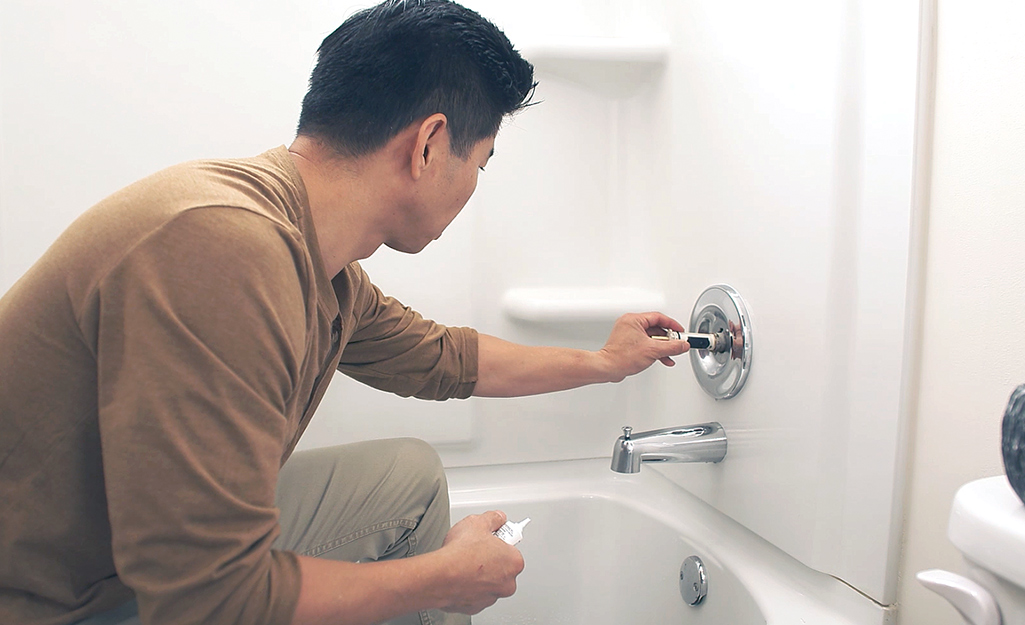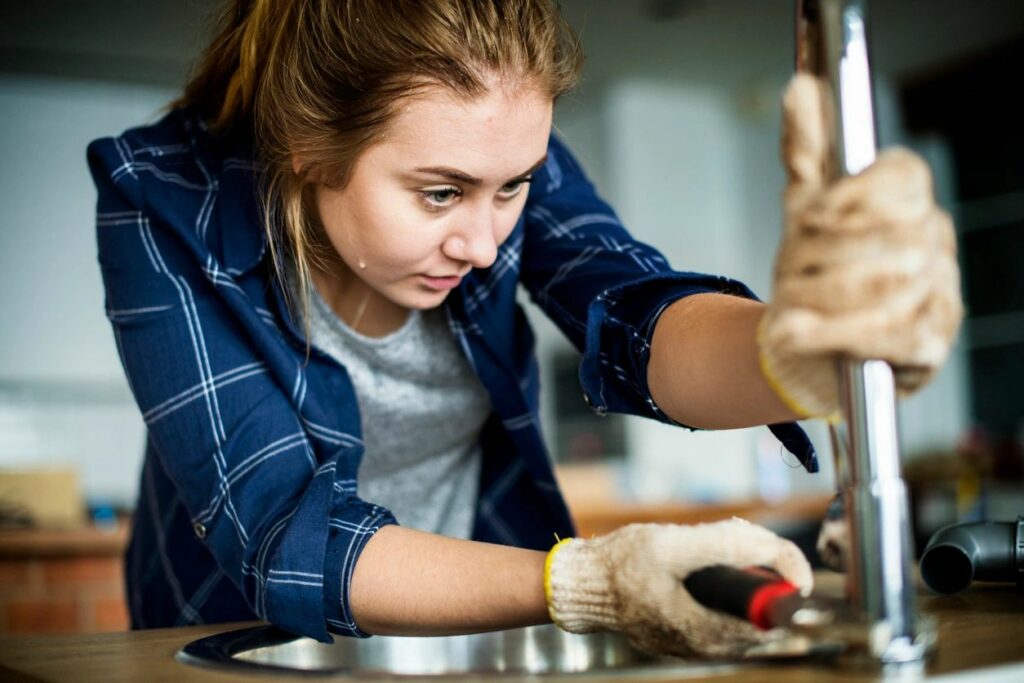Which It's Needed to Correct a Dripping Faucet
Which It's Needed to Correct a Dripping Faucet
Blog Article
How do you actually feel with regards to How to Fix a Dripping or Leaky Faucet ?

Leaking taps may feel like a small aggravation, yet their influence goes beyond just the aggravation of the audio. From drainage to sustaining unnecessary financial costs and wellness threats, neglecting a dripping tap can bring about different effects. In this post, we'll delve into why it's crucial to resolve this common house problem quickly and properly.
Waste of Water
Ecological Effect
Trickling taps contribute dramatically to water wastage. According to the Epa (EPA), a single tap dripping at one drip per secondly can lose more than 3,000 gallons of water annually. This not just strains water resources but additionally affects environments and wildlife based on them.
Step-by-Step Overview to Dealing With a Dripping Faucet
Tools Needed
Before trying to repair a leaking faucet, gather the necessary devices, consisting of an adjustable wrench, screwdrivers, substitute components (such as washers or cartridges), and plumber's tape.
Usual Tap Issues and Their Solutions
Determine the sort of faucet and the particular issue creating the drip. Typical problems include damaged washing machines, corroded valve seats, or faulty O-rings. Refer to supplier instructions or on the internet tutorials for detailed advice on repairs.
Financial Prices
Increased Water Costs
Past the environmental effect, leaking faucets can pump up water bills considerably. The gathered wastefulness with time converts into greater utility costs, which might have been prevented with timely repairs.
Potential Residential Or Commercial Property Damages
Furthermore, extended leaking can lead to damage to components and surfaces surrounding the tap. Water buildup can trigger discoloration, corrosion, and also structural issues if left unattended, resulting in extra repair work costs.
Health and wellness Concerns
Mold And Mildew and Mold Growth
The constant presence of moisture from a leaking tap develops a perfect setting for mold and mildew and mold growth. These fungi not just endanger indoor air high quality yet also posture wellness dangers, specifically for people with respiratory system problems or allergies.
Waterborne Diseases
Stationary water in leaking faucets can come to be a breeding place for bacteria and various other pathogens, raising the threat of waterborne illness. Pollutants such as Legionella germs thrive in stationary water, potentially leading to serious illnesses when consumed or inhaled.
Do it yourself vs. Expert Repair work
Pros and Cons of Do It Yourself Repair Service
While some might try to fix a leaking tap themselves, DIY fixings come with their very own set of difficulties. Without correct knowledge and devices, do it yourself attempts can worsen the concern or result in insufficient repairs, prolonging the problem.
Benefits of Working With an Expert Plumber
Employing an expert plumber makes certain that the underlying cause of the leaking tap is dealt with efficiently. Plumbers have the experience and equipment to detect and fix faucet issues effectively, saving time and lessening the danger of further damage.
Ecological Duty
Specific Contribution to Conservation
Taking obligation for repairing trickling taps aligns with wider initiatives towards water preservation and ecological sustainability. Every person's activities jointly make a considerable effect on preserving priceless sources.
Sustainable Living Practices
By prioritizing prompt fixings and taking on water-saving practices, individuals contribute to sustainable living techniques that benefit both existing and future generations.
Safety nets
Regular Upkeep Tips
To stop leaking faucets, do routine upkeep such as cleaning aerators, evaluating for leaks, and replacing damaged components quickly. In addition, think about mounting water-saving devices or upgrading to more effective components.
Importance of Prompt Repair Works
Resolving dripping faucets as soon as they're seen prevents additional water waste and prospective damages, inevitably conserving both water and cash in the future.
Impact on Building Worth
Assumption of Well-Maintained Property
Maintaining a home in good condition, including attending to maintenance issues like trickling taps, enhances its regarded worth and value amongst potential customers or renters.
Influence on Resale Worth
Residences with well-maintained plumbing components, including faucets, command greater resale worths in the realty market. Addressing leaking taps can contribute to a favorable impact during property assessments and arrangements.
Conclusion
Attending to a trickling tap goes beyond simple convenience; it's a vital step toward preserving water, lowering financial expenses, and safeguarding wellness and building. Whether through do it yourself fixings or professional aid, acting to deal with dripping faucets is a little yet impactful means to promote responsible stewardship of resources and contribute to a healthier, much more lasting future.
How to Fix a Leaky Faucet: Step-by-Step Repair Guide
A leaky faucet may seem like a simple annoyance, but if it's not fixed promptly, that leak could cost hundreds to potentially thousands. From water damage to mold, mildew, and high water bills, even a tiny leak can be catastrophic if left unattended. Damage like this can even affect the overall value of your home, so it's important to take the right approach for leaky faucet repair. You may need the help of a plumber in some cases, but we've got a few tips you can try on how to fix a leaky faucet before calling the pros.
Four Faucet Types
When you're learning how to fix a leaky faucet, the first step is knowing what kind of faucet you're working with! There are four common types.
Cartridge Faucets
Cartridge faucets come in one- or two-handled varieties. In one-handled cartridge faucets, hot and cold water combines in a single cartridge. In the two-handled versions, hot and cold water are controlled separately and mixed in the faucet.
Ball Faucets
Ball faucets have a single lever you push up and down to adjust the pressure and rotate to change the temperature. A slotted metal ball controls the amount of water allowed into the spout.
Compression Washer Faucets
They're the oldest type of faucet, but they're still used in many homes — especially older ones. Compression faucets have two separate handles that, when turned, raise or lower the washer that seals a water valve. This valve stops water from flowing through the faucet when it is turned off.
Disc Faucets
Disc faucets rarely need to be repaired due to their maintenance-free design. The water flow is controlled by two discs — the upper one raises and lowers against a fixed lower disc, creating a watertight seal. If your disc faucet starts leaking, you may need to replace the seals or clean residue buildup from the inlets.
Fixing a Leaky Faucet
Step 1: Turn Off the Water
Whether you're learning how to fix a leaky bathtub faucet or how to fix a leaky kitchen faucet, always turn off the water supply to your working area when you're fixing a leak. The last thing you want is a flood added to your list of things to fix.
Look for the shutoff valves below your sink or around the tub and turn them clockwise to stop the water flow. If your faucet doesn't have shutoff valves, you may need to turn off the water for the whole house. Check to make sure it's off by turning the faucet on. If nothing comes out, you're ready to start the repair.
Step 2: Take Apart the Faucet
How you disassemble your faucet depends on the type of fixture you have. You can use a flathead screwdriver to remove the caps on top of the handle or handles for cartridge and compression faucets. Inside, you should see handle screws. Unscrew these with a screwdriver to remove the handle.
Disc- and ball-style faucets will typically have an inlet screw near the handle, and removing that will reveal the interior of the faucet.
Detach the Valve Stem
For cartridge- and compression-style faucets, you'll see the inner valve stem or cartridge once you remove the faucet handles. If you have a compression faucet, unscrew the brass valve stem. If you have a cartridge faucet, pull out the cartridge. If your cartridge has been in place for a while, it may require some tools or extra force to remove it due to mineral deposits.
Examine and Replace Parts
Once you've removed the parts, check them out to confirm what needs to be replaced. You may see corroded rubber washers, O-rings, stems, or cartridges. On a ball-style faucet, check the seats and springs for damage.
If you need to repair a leaky disc faucet, check the inlet and seals on the lower disc.
Once you determine what parts must be replaced, visit your local hardware store. Bring the damaged parts with you to ensure you can purchase the correct components to replace them.
Clean Valves and Faucet Cavity
If you've removed a stem or cartridge, you may notice mineral buildup in the faucet's threads. Use white vinegar to clean the valve seat by soaking it for a few minutes, then scrub it away with a soft toothbrush and rinse with warm water. You can also clean the interior of the faucet in the same way.
Reassemble the Faucet
Once your faucet is cleaned and the required parts have been replaced, it's time to reassemble it. Put the pieces back together and slowly turn the water supply back on. Doing this slowly is crucial because too much initial water pressure can damage the new hardware you've just installed.
https://homewarranty.firstam.com/blog/how-to-fix-leaky-faucet

As a fervent person who reads on 4 Common Reasons for a Leaky Faucet, I think sharing that piece of content was worthwhile. So long as you liked our post kindly remember to share it. Thanks so much for your time invested reading it.
Report this page